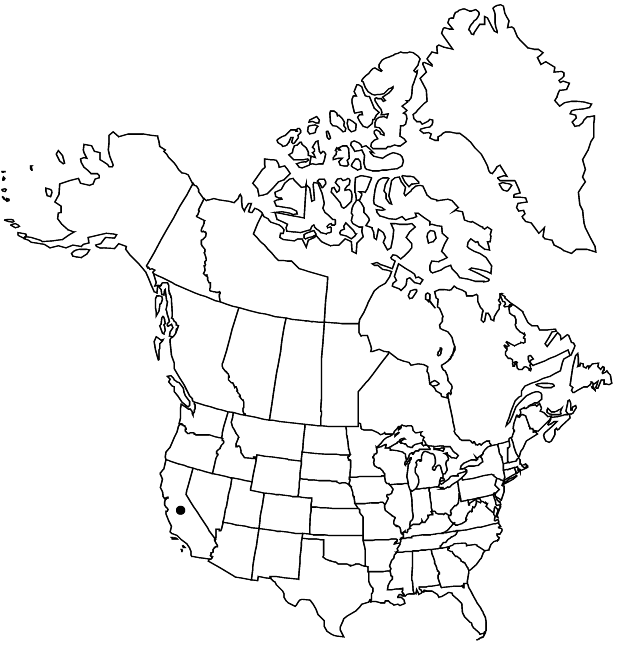Lithophragma cymbalaria
Fl. N. Amer. 1: 585. 1840 ,.
Plants slender. Flowering stems simple, 20–40 cm. Leaves in basal rosette and cauline, basal weakly 3-lobed, cauline (2), opposite, (1 pair), deeply 3-lobed, reduced, similar to basal; stipules narrow, not decurrent on petiole, (margins fimbriate); petiole to 9 cm; blade dark green or reddish green, reniform, (base ligulate), surfaces sparsely hairy. Inflorescences solitary flowers or 1–3, (lax), nodding, 2–5(–8)-flowered racemes, simple, (10–40 cm). Pedicels 1.5–2 times longer than hypanthium. Flowers persistent, fragrant, vertical; hypanthium turbinate, elongating in fruit, open at throat, (length 2 times diam.); sepals erect, becoming wide-spreading after anthesis, triangular; petals (exserted), widely spreading, white, ovate, narrowly clawed, unlobed, (bowl-shaped), 4–8 mm, ultimate margins entire; ovary 1/2 inferior; styles included in fruit; stigma papillae apical. Seeds 0.4 mm, tuberculate (tubercles in 3–19 rows, blunt or spinelike). 2n = 14 + 1.
Phenology: Flowering Mar–Apr.
Habitat: Shady oak-manzanita/arbutus woodland, mountainous regions, drainage courses
Elevation: 0-2000 m
Discussion
Lithophragma cymbalaria is the only species of the genus with a single pair of opposite cauline leaves. It shows a high degree of self-compatibility, with abundant seeds produced; it may produce abundant bulbils. It is found from Stanislaus County to Santa Barbara County including the northern Channel Islands.
Selected References
None.
